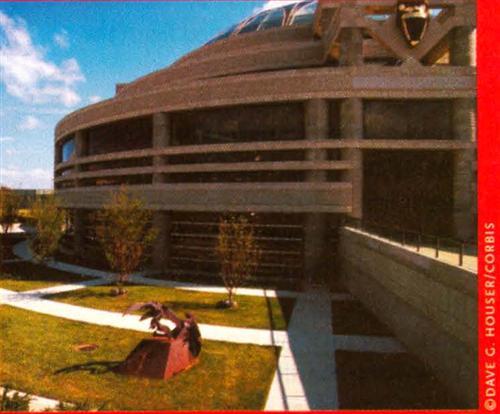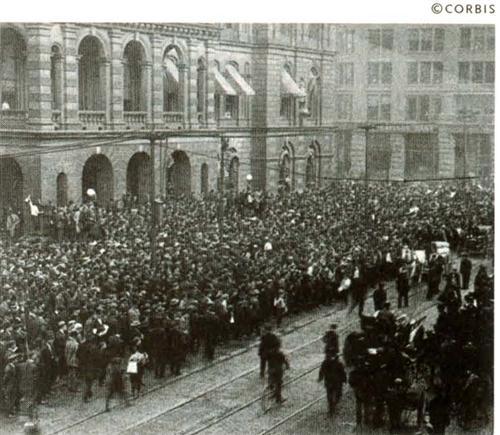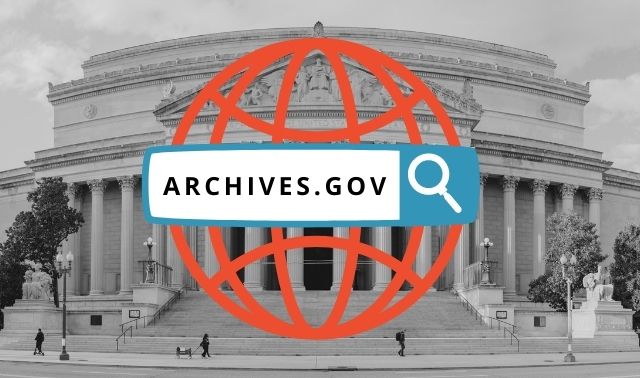Sign up for the Family Tree Newsletter Plus, you’ll receive our 10 Essential Genealogy Research Forms PDF as a special thank you!
Get Your Free Genealogy Forms
"*" indicates required fields
As much as Detroit seems a city of the modern age, pistoning at the pace of the automobile, it’s actually celebrating its 300th birthday this year. Detroit’s tricentennial focus on history and heritage makes 2001 a natural time to research your Detroit ancestors and to tap the Motor City’s genealogical riches.
The tricentennial will pay tribute to those who built the city — perhaps including your ancestors. If your research confirms descent from the earliest French colonists (1701 to 1710), the French Canadian Heritage Society <habitant.org/fchsm/> offers commemorative certificates. If your ancestors were among those who settled Detroit during its first 50 years (1701 to 1751), the Detroit 300 Committee is interested. The committee also wants to know of individuals who “made a difference” in the city’s history.
Not sure when your ancestors arrived? Most genealogical libraries should have Genealogy of the French Families of the Detroit River Region, 1701-1936. Known as Denissen’s Genealogy, this source also traces birth families of those who married into early French families. So even if your branch doesn’t have French ancestry, they may be included. (For more on tracing your French roots, see the June 2001 issue of Family Tree Magazine.)
The yearlong tricentennial celebration reaches its peak July 13-29 with the Detroit 300 Festival, which includes a multicultural extravaganza at Chene Park, Sail Detroit with a parade of historic ships, Sounds of Detroit music festival, a “homecoming” of celebrities and a history-themed family fest.
Families with Detroit roots may want to celebrate together. Jennifer Petrous of the Detroit Metro Convention & Visitors Bureau <www.visitdetroit.com> is available to help those planning a reunion in the Detroit area (313-202-1931, jpetrous@visitdetroit.com).
Driven by a Cadillac
The city was founded as “D’etroit” by Antoine Cadillac in 1701 — a milestone that the tricentennial festival will re-create on July 24, downtown at Hart Plaza and the Riverfront Promenade. That early settlement was a military and trading post, soon surrounded by ribbon farms, narrow tracts extending inland from the riverfront. Ruled by the French until 1760, Detroit was then under British control before becoming part of the United States in 1796. When the Michigan Territory was created in 1805, Detroit was still mostly a French-speaking community.
That changed as surrounding land was surveyed and sold, primarily to settlers from New England, New York, Ohio and Indiana. The opening of the Erie Canal increased growth and commercial development in Detroit, and during the 1830s Michigan was the nation’s fastest-growing area. The fur trade gave way to manufacturing, and descendants of some early families moved west.
Before the Civil War, Detroit was the last stop before Canada on the Underground Railroad, and generally supported runaway slaves. Other newcomers came from foreign countries, with waves of immigrants in the mid-19th to mid-20th centuries. Some stayed in Detroit while others passed through on their way to rural farms, the mining towns of the Upper Peninsula, or lands farther west. Industrialization attracted an influx of Americans and immigrants alike for jobs in Detroit factories. Global Journeys in Metro Detroit describes immigration patterns of 30 nationalities and cultures that settled here.
The road to research
You can immerse yourself in the city’s past at the Detroit Historical Museum (5401 Woodward Ave., 313-833-1805, <www.detroithistorical.org>). There you can walk the Streets of Old Detroit, from log to cobblestone to brick, and visit shops and businesses from past eras.
Neighbors of the museum in the city’s Cultural Center include Wayne State University, the Detroit Institute of Arts and the Detroit Public Library (5201 Woodward Ave., 313-833-1000, <www.detroit.lib.mi.us>; open Tuesday-Saturday). For the genealogist, the “DPL” will be your headquarters in Detroit.
The DPL’s Burton Historical Collection (313-833-1480, <www.detroit.lib.mi.us/burton/>) is a treasury of primary and secondary source materials for family researchers. Among its holdings are US and Canadian county and local histories, federal censuses for all states and some Canadian provinces, land and military records, genealogies and photographs. The 38-volume set of American State Papers is here as are many city directories. Church holdings include microfilmed records of St. Anne de Detroit (1000 Ste. Anne, 313-496-1701, <kqa.com/deDetroit/>), founded in 1701 and the only area church until after the War of 1812; Protestants also used its services for baptism, marriage and burial. (The church will celebrate its own tricentennial as part of Detroit 300 on July 26, 2001.)
Manuscripts make up a significant share of Burton’s holdings, including family papers, correspondence, ledgers, scrapbooks, voyageur licenses and Detroit’s earliest colonial records. Many individuals prominent in Michigan history moved here from other places, so it’s not unusual for family papers to include documents originating elsewhere, such as wills, marriage registers and slaveholders’ inventories. City archives and those of Wayne County and Michigan Territory provide probate, tax and other early records. Children’s Aid Society and Children’s Home of Detroit records may provide information on an orphaned ancestor.
Unfortunately, most of Burton’s collection is not included in DPL’s online catalog, except for material acquired since 1987. You’ll need to rely on published guides. Burton is a reference library, so material must be used on site. If you can’t get there, a list of researchers is available.
Now for the bad news. Public hours at Burton have been reduced since a July 2000 storm caused flooding of basement storage. Although damaged items were cleaned and restored, hours of access remain a casualty. The most recent public schedule is 1-5 p.m. Tuesday, Thursday, Friday and Saturday, and 5-9 p.m. Wednesday.
Three other library departments hold material of interest. Old newspapers are on microfilm in the General Information Department. The Great Lakes Patent & Trademark Center is useful for inventive ancestors. And the Map Collection contains wonderful old maps. If your forebears owned property in Wayne County outside of Detroit in 1855, look for their names on John Farmer’s Map of Wayne County Michigan. Some maps from the 1700s name earlier property owners in Detroit and Macomb County.
Kitty-corner from DPL is the Walter Reuther Library at Wayne State University (5401 Cass Ave., 313-577-4024, <www.reuther.wayne.edu>). Its focus is the development of labor unions and related social, economic and political reform movements. Besides union archives, you’ll find personal papers, family correspondence and audiovisuals, such as photographic collections from Detroit newspapers back to the early 1900s. Oral history projects include Women and Work, minorities and Depression-era artists and writers.
If your ancestors owned property in Detroit or Wayne County, visit the Wayne County Register of Deeds Office (International Center Building, 400 Monroe St., Sixth Floor, 313-224-5850). Its index of land transactions goes back to 1703; the office is working on an online database you can search at home. Ribbon farms of early Detroit settlers extended up the shoreline into what became Macomb County, so some records may be at the Macomb County Clerk’s Office (40 N. Main St., First Floor, Mount Clemens, 810-469-5120, <www.libcoop.net/sabaugh/clerkindex.htm>). Macomb separated from Detroit in 1818; the clerk’s office has vital records since 1867, marriage records since 1819.
If research reveals ancestors who died in Detroit, check out Mt. Elliott Cemetery (1701 Mt. Elliott Road, 313-567-0048) or Elmwood Cemetery (1200 Elmwood Ave., 313-567-3453). Elmwood also offers black heritage tours highlighting historic grave sites.
Mapping out a visit
If you’re coming to Detroit for the tricentennial and for research, staying at Holiday Inn St Regis (3071 W. Grand Blvd., 313-873-3000), within a mile of the libraries, is particularly convenient. The downtown and riverfront areas offer accommodation options, but are a bit farther away. The closest dining, if you’re at the Detroit Public Library, is across the street in the Detroit Institute of Arts (5200 Woodward Ave., 313-833-7900, <www.dia.org>), or the Small World Café in the International Institute (11 E. Kirby St., 313-874-2233).
Other recommended restaurant options:
• Twingo’s Café, 4710 Cass Ave., (313) 832-3832 — French inspired
• Traffic Jam, 511 W. Canfield, (313) 831-9470 — always interesting
• Deli Unique, 3663 Woodward Ave., (313) 833-8810 — cafeteria-style
• Duet, 3663 Woodward Ave., (313) 831-3838 — expensive but worth the splurge
• JaDa, 546 E. Earned St., (313) 965-1700 — upscale BBQ and southern
• Blue Nile Ethiopian Restaurant, 508 Monroe St., (313) 964-6699 — try something a little different
• Any Creektown restaurant
Unfortunately for out-of-towners, Detroit’s Motor City appellation prevented development of rapid transit. The Detroit People Mover, a monorail system circling the downtown and riverfront area, is the only useful public transportation for visitors. (See a useful but unofficial map at <members.aol.com/wingsrgr8/DPM/>.) If you stay at a downtown hotel, the People Mover is a great way to get to restaurants and the Register of Deeds, but it doesn’t extend up Woodward Avenue to the library. To really get around, you’ll need one of the things Detroit is most famous for — an automobile.
From the August 2001 issue of Family Tree Magazine
ADVERTISEMENT






